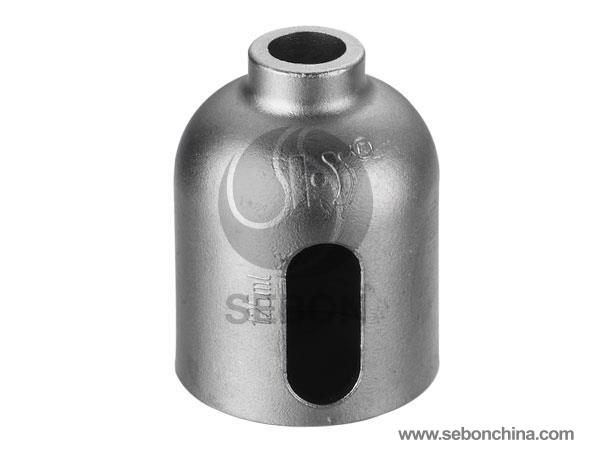
- [email protected]
- 0086-371-86560898

Contact us now for any need or questions about our company or product.

Difference between the casting and forging
一, casting:
1, casting: the metal meltinginto meet certain requirements of the liquid and then poured into the mold, after cooling solidification, men get have a predetermined shape, size and performance of the process of casting parts (or blank). The foundation of modern machinery manufacturing industry technology.
2, blank casting production cost is low, for complex shape, especially the parts with complex inner cavity, more can show its economical efficiency; At the same time, it has a wide adaptability, and has good comprehensive mechanical properties.
3, but necessary materials for casting production (such as metal, wood, fuel, molding materials, etc.) and equipment (such as metallurgical furnace, sand mixing machine, molding machine, core making machine, sand machine, shot blasting machine, cast iron plate, etc.), and produce dust, harmful gases, and noise and pollution of the environment.
4, Going into the 20th century, the development of casting speed, successively developed nodular cast iron, malleable iron, ultra-low carbon stainless steel and aluminum copper, aluminum, silicon, aluminum and magnesium alloys, titanium, nickel base alloy, casting metal material, and the new process of gray cast iron inoculation treatment. After the '50 s, the wet sand high pressure molding, chemical hardening sand molding and core making, negative pressure molding, and other special casting, blast cleaning and other new technology.
5, casting has a lot of phyletic, the modeling method is traditionally divided into: (1) ordinary sand mold casting, including chemical hardening wet sand, dry sand mold and sand mold 3 classes. (2) special casting, mud (e.g., investment casting, mold casting, shell mold casting, pressure casting foundry, mold casting, ceramic mold casting, etc.) and metal as the main special casting mold material (e.g., metal mold casting, pressure casting, continuous casting, low pressure casting, centrifugal casting, etc.).
6, casting process usually includes: (1) cast (container) make liquid metal solid casting, casting according to the materials can be divided into sand mold, metal, ceramic, mud, graphite, etc., according to use can be divided into one-time, semi permanent and permanent type, mold preparation quality are the main factors influencing the casting quality; (2) cast metal melting and pouring, casting metal (alloy) mainly include cast iron, cast steel and casting non-ferrous alloys; 3. Casting processing and inspection, casting processing including foreign body removal of core and the casting surface, remove water riser, shovel grinding burrs and cover with seam protruding content and heat treatment, shaping, anti-rust treatment, rough machining, etc.
二、forging:
1, forging: is the use of pressure forging machinery for metal blank, make its plasticity deformation in order to obtain certain mechanical properties, a certain shape and size of forgings machining method.
2 one of two major parts, forging. By forging can eliminate the as-cast loose metal, welded holes, generally is superior to the same material of the casting on the mechanical properties of the forgings. Mechanical load is high, the working conditions in the severe important parts, in addition to the shape of a simple rolling sheet, profiles are available or welding parts, use forging more.
3, forging press forming method can be divided into: (1) the open-die forging, free forging). Using force or pressure to make the metal in the up and down between two to iron (anvil block) deformation for forging, is mainly manual forging and mechanical forging two kinds. (2) closed forging. Metal blank in certain shapes in the bore of the forging die forging compression deformation, can be divided into the die forging, cold heading, rotary forging, extrusion, etc. Can be divided into the hot forging press forging deformation temperature (processing temperature higher than the blank metal recrystallization temperature), temperature (below the recrystallization temperature) forging and cold forging (room temperature).
4, forging materials are mainly components of carbon steel and alloy steel, the second is aluminum, magnesium, titanium, copper and its alloy, etc. State of raw materials has a bar, ingot casting, metal powder and liquid metal, etc. Metal in the deformation of the cross-sectional area before and after the deformation of the die area is referred to as the forging ratio. Correctly choose the forging ratio on improving product quality, reduce the cost.
